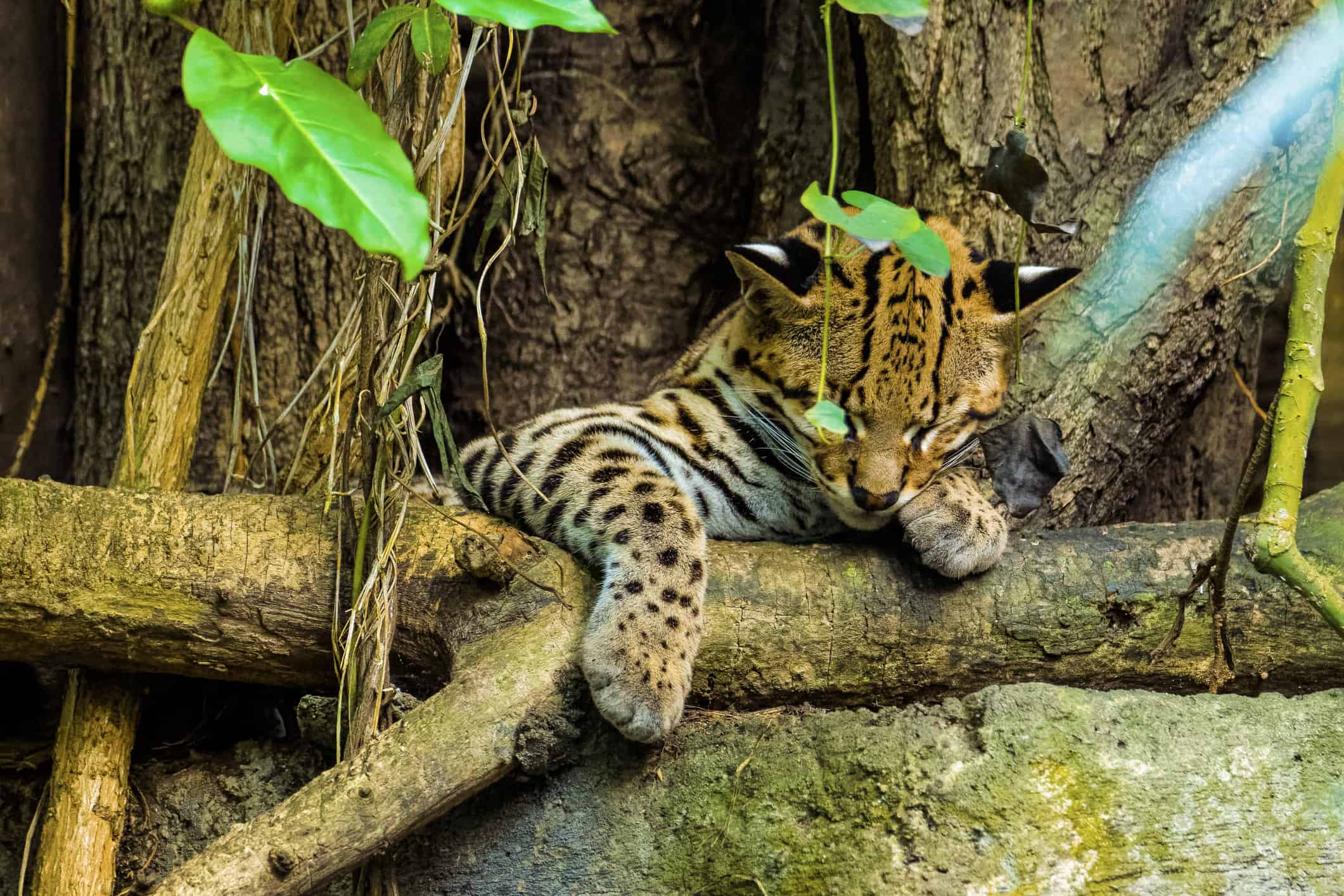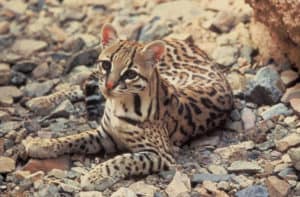It’s amazing to get this insight into the jungle cat’s hunting strategy. This ocelot is on the prowl for a meal but it takes a while to find one. Once the target prey is located, however, the feline’s focus is total and intense! Scroll down to see the full extraordinary footage of a successful ocelot ambush attack.
What Do Ocelots Normally Eat?
Ocelots are sometimes called ‘ghost cats’ because they can be very secretive. They are a native species of North, Central, and South America. They like to live in areas with dense vegetation cover just like the one featured in this clip.
These guys are carnivores but they are very adaptable and are a generalist predator. They need to eat almost two pounds of meat a day to keep them healthy. Their diet varies depending on where they live.
The largest prey item that they can tackle would be a large rodent such as an agouti. If they can’t finish this whole, in one sitting, they will cover it with leaves and return to it the next night. They have also been seen catching armadillos, monkeys, and even sloths. Having said that, they often prefer to catch smaller mammals and will target whatever is most available. You can see them hunting mice, or opossums and rats.
Detailed analysis of their diet has shown that it consists of 65 percent small rodents, and 18 percent reptiles, and the remainder is made up of crustaceans, fish, medium-sized mammals, and birds. However, during the wet season, this can change and they can eat a lot of spawning fish and land crabs!

Ocelots usually hunt at dawn and dusk and can sleep during the day.
©Thorsten Spoerlein/ via Getty Images
How Do Ocelots Normally Hunt?
Ocelots are nocturnal and primarily hunt at night. At the same time, their activity usually peaks at dawn and dusk – making them crepuscular. They usually live and hunt on their own within their territory. These guys can hunt on the ground, in trees, and even in water! As you can see from this clip, they spend a lot of time prowling around their territory looking for prey. Their patterned coat means that they are very well camouflaged amongst the vegetation and prey animals find it hard to see them coming. Some research suggests that they may be able to pick up on the scent of prey and follow it. They carefully stalk their prey and when the time is right, they pounce on it in an ambush attack. It looks so similar to a pet cat stalking and catching a mouse!
Watch the Impressive Hunt Below
The photo featured at the top of this post is © Saad315/Shutterstock.com
Thank you for reading! Have some feedback for us? Contact the AZ Animals editorial team.







